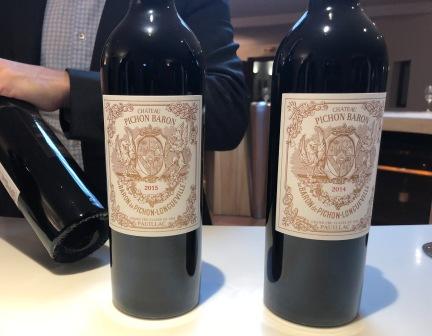Reading a French wine label is a little different than reading one from a US winery. The labels are typically more complex with unfamiliar terms and phrases but with a little practice and geographic research, you’ll soon be listing off your favorite appellations in no time.
There are four key aspects to a French wine label that you will want to note: the vintage, the appellation, the classification and the chateau (or winemaker).
Vintage
The vintage is pretty easy to decipher and it is vitally important. It tells you the year the grapes were harvested in, and depending on the weather for each year, this can cause prices to swell or cave in. Don’t be surprised if bottles from stellar years are much more expensive than bottles from years with less desirable conditions.
That said, modern day winemakers are constantly improving the quality of their output in not so good years, so you really want to pay attention to any serious outliers in quality, and not get too taken in with the year to year swings. Frequently, a bad vintage means that the producers have less crop to work with, not necessarily bad fruit.
The Appellation
The appellation is a huge factor on the label because, although it may seem counter intuitive, in France the Appellation is what ultimately tells you what grapes were used in producing the wine. France (and many other European countries) segment their wines by appellation rather than saying simply Merlot or Cabernet Sauvignon.
This is because of long standing rules in those countries about which grapes can grow where. To understand what you are buying requires a bit of geographic knowledge on behalf of the purchaser.
For instance, a Bordeaux from St Emilion (right bank) is going to be a Merlot based red blend, compared to one from Margaux (left bank) that is going to be Cabernet Sauvignon based. Both wines will simply say Bordeaux, but the Appellation is the tell tale sign.
The more you experiment and research these different appellations within France, the more you will know about the wine inside. Often times a quick Wikipedia search of any appellation is all it takes to learn what grapes are produced there.
The Classification
The classification of the wine means a few different things throughout France. In some areas, such as Burgundy, you will have Grand Cru wines which typically mean the wine is from the “highest” quality single vineyard, while Premier Cru means a “high” quality single vineyard, and then “Village” wines which may come from multiple vineyards.
In Bordeaux you have the Classifications of 1855 that separate vineyards out into “growths.” The “First Growth” wines are some of the most prized in the world.
Becoming familiar with the classifications also takes time, and it may seem daunting at first, but as you continue to shop, research and sample different wines, you’ll begin to understand more about the French classification systems.
The Chateau
The Chateau (or winemaker) is another important aspect. As you embark on your wine journey, you will begin to encounter and recognize winemakers who make excellent wines, or (perhaps more importantly) wines that you enjoy.
Often times a second bottle (or second label, meaning the lesser wine) from a top winemaker is a better quality than a grand cru from a lesser known winemaker. I’d recommend digging first into the Appellations to get your footing, and then follow that up with the individual Chateaux.
That’s a quick look at some important factors in decoding a French label and hopefully coming to a better understanding of what’s in the bottle.
If you’re interested in further exploring French wine, check out our book, “Decoding French Wine,” on Amazon in paperback and eBook formats.
